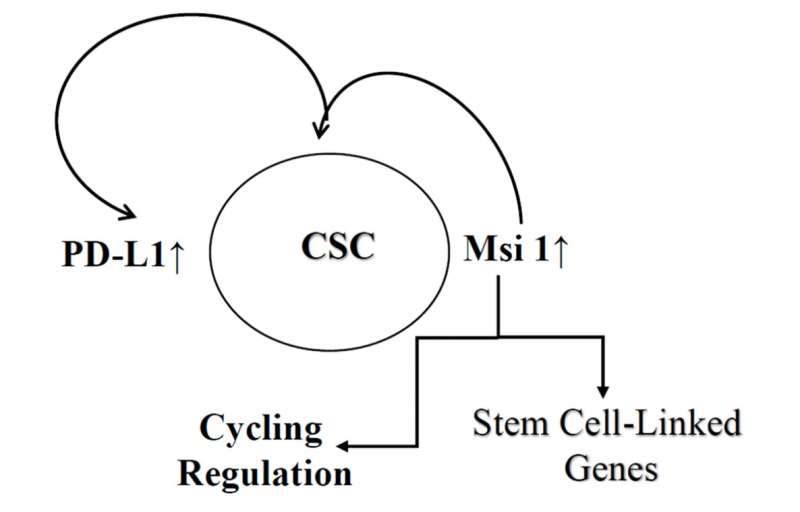This article has been reviewed according to Science X's editorial process and policies. Editors have highlighted the following attributes while ensuring the content's credibility:
fact-checked
proofread
Musashi 1 in breast cancer: Implications for dormancy and survival in bone marrow

A new research paper titled "Increased expression of musashi 1 on breast cancer cells has implication to understand dormancy and survival in bone marrow" has been published in Aging.
Breast cancer (BC) stem cells (CSCs) resist treatment and can exist as dormant cells in tissues such as the bone marrow (BM). Years before clinical diagnosis, BC cells (BCCs) could migrate from the primary site where the BM niche cells facilitate dedifferentiation into CSCs. Additionally, dedifferentiation could occur by cell autonomous methods.
In this new study, researchers George R. Nahas, Lauren S. Sherman, Garima Sinha, Markos H. El Far, Andrew Petryna, Steven M. Munoz, Kimberly A. Silverio, Maran Shaker, Pujan Neopane, Veronica Mariotti, and Pranela Rameshwar from Rutgers New Jersey Medical School studied the role of the RNA-binding protein, Musashi I (Msi 1). They also analyzed its relationship with the T-cell inhibitory molecule programmed death-ligand 1 (PD-L1) in CSCs.
The researchers write, "We validated the link between Msi 1 and PD-L1 in CSCs [cancer stem cells] based on significant reduction of CSCs following Msi 1 knockdown."
PD-L1 is expressed on triple negative BC and other cancers. Therefore, PD-L1 is an immune checkpoint that is a target in immune therapy for cancers. Msi 1 can support BCC growth through stabilization of oncogenic transcripts and modulation of stem cell-related gene expression. The researchers reported on a role for Msi 1 to maintain CSCs. They found that it seemed to occur by the differentiation of CSCs to more matured BCCs. This correlated with increased transition from cycling quiescence and reduced expression of stem cell-linked genes. CSCs co-expressed Msi 1 and PD-L1. Msi 1 knockdown led to a significant decrease in CSCs with undetectable PD-L1.
"This study has implications for Msi 1 as a therapeutic target, in combination with [an] immune checkpoint inhibitor. Such treatment could also prevent dedifferentiation of breast cancer to CSCs, and to reverse tumor dormancy. The proposed combined treatment might be appropriate for other solid tumors," the researchers conclude.
More information: George R. Nahas et al, Increased expression of musashi 1 on breast cancer cells has implication to understand dormancy and survival in bone marrow, Aging (2023). DOI: 10.18632/aging.204620




















